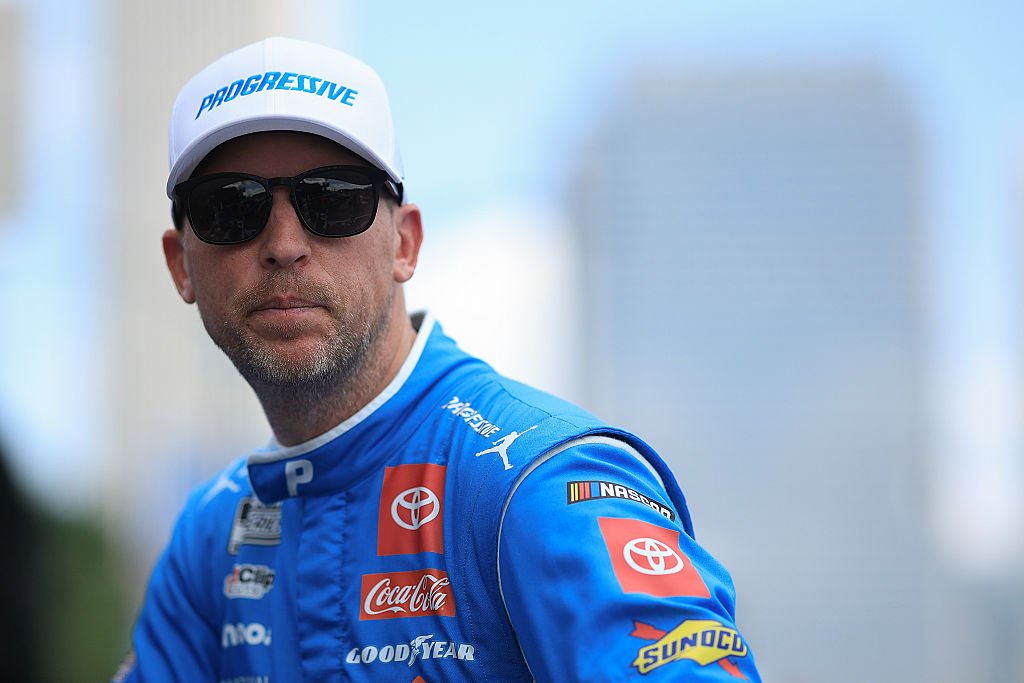Denny Hamlin’s Engine Troubles at the Chicago Street Course
Denny Hamlin faced a challenging start at the Chicago street course after experiencing a significant engine failure during his practice session. As part of the NASCAR Cup Series, Hamlin was one of the first drivers on the track, eager to make an impression. Unfortunately, his hopes were dashed when, shortly after leaving the pit road, his No. 11 Joe Gibbs Racing Toyota began to emit smoke.
Early Practice Session Disruption
The incident unfolded in the initial moments of the practice session. Hamlin had just joined the track alongside other drivers, aiming to gain valuable experience on the unique street course layout. However, as he approached Turn 6, he noticed smoke billowing from the vehicle. In a matter of seconds, as he turned into the corner, the car lost control, spinning out and coming to a halt.
This unexpected turn of events brought a halt to the practice session, resulting in a red flag while officials worked diligently to clean up the spilled fluids from the track. NASCAR, understanding the implications of the situation, extended the practice time by an additional 10 minutes once the track was deemed ready for racing again.
Hamlin’s Reaction to the Incident
In the aftermath of the engine blowout, Hamlin expressed his frustration regarding the unpredictable nature of racing. "I don’t know; I hadn’t even hit the gas yet,” he remarked. “I came off Turn 4, just started accelerating, and blew the whole bottom out.” His comments highlighted the unpredictability of mechanical failures in motorsport, which can often feel beyond a driver’s control.
Due to the engine failure, Hamlin would be sidelined for the rest of Saturday’s practice and qualifying session. This setback meant that he would have to start from the back of the 40-car field during the race on Sunday afternoon.
The Importance of Practice on Street Courses
For drivers like Hamlin, practice sessions are crucial, especially on a street course where familiarity with the layout can significantly impact performance. Hamlin reflected on the importance of these sessions, stating, “A lot of things that we want to be in control of as drivers. We want to be in control of our result. You don’t want to have processes or mechanics stop you from that.” This sentiment resonates with many drivers, as they invest countless hours preparing for races, only to have their efforts thwarted by unforeseen mechanical issues.
Hamlin’s previous performances at the Chicago street course had been a mixed bag, with finishes of 11th and 30th in his two earlier appearances. The pressure to perform well at a track where he has yet to achieve a notable result adds to the disappointment of the engine failure.
Limited Experience on Road Courses
This race at the Chicago street course marked only the second occasion this season that Hamlin would be navigating a course featuring both left and right turns. He had opted out of the Mexico City road course event the previous month and had finished 21st at the Circuit of The Americas in March. With just one road course win to his name—achieved at Watkins Glen in 2016—Hamlin’s limited experience on these tracks adds another layer of complexity to his racing strategy.
The unique challenges posed by road courses, including the need for precise handling and braking, demand that drivers have confidence in their vehicles. Unfortunately, Hamlin’s engine failure robbed him of the opportunity to build that necessary confidence heading into the race.
Looking Ahead: The Race Day Challenges
As race day approached, Hamlin had to navigate the implications of starting at the back of the pack. While starting positions can influence the outcome of a race, drivers often find ways to overcome early setbacks. Hamlin’s experience and skill on the track would play a crucial role in his ability to maneuver through the field.
With the right strategy and some luck, it is possible for Hamlin to make significant progress during the race. However, the challenge of overtaking multiple drivers on a street course, known for its narrow and winding roads, is a tall order. The unpredictability of racing, combined with the fierce competition from fellow drivers, makes for an exciting yet daunting prospect.
The Road Ahead for Denny Hamlin
As Denny Hamlin prepares for the race, the focus shifts to his team and how they can support him in overcoming the challenges presented by the engine failure. A strong performance in the race could help turn around what has been a frustrating weekend thus far.
In motorsport, resilience is key. Hamlin’s ability to adapt and respond to setbacks will be put to the test as he aims for a successful finish. With the right mindset and support from his team, he can still make an impact, despite the rough start.
Conclusion: The Unpredictability of Racing
In summary, Denny Hamlin’s weekend at the Chicago street course serves as a reminder of the inherent unpredictability of racing. Mechanical failures can occur at any time, often leading to disappointment and frustration for drivers. As Hamlin prepares to take on the challenge of the race, all eyes will be on him to see how he can adapt and perform under pressure. The road course may present unique challenges, but with determination and skill, Hamlin has the potential to turn his weekend around.
